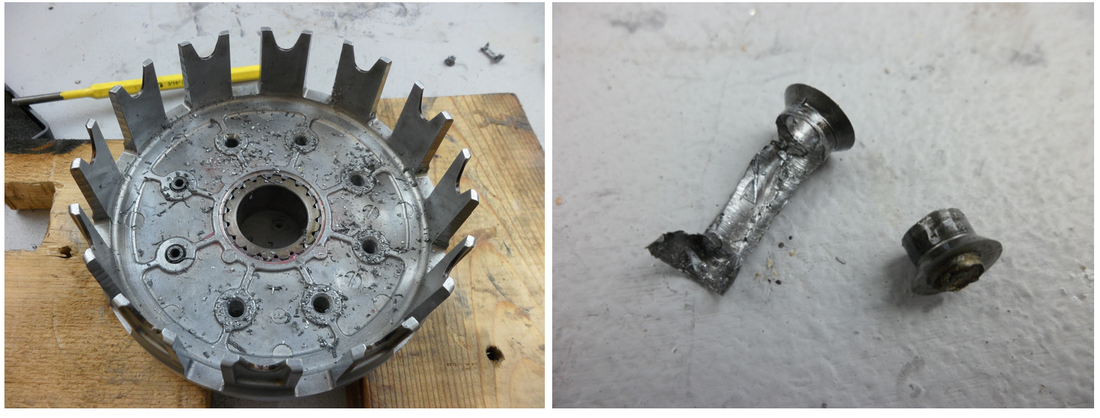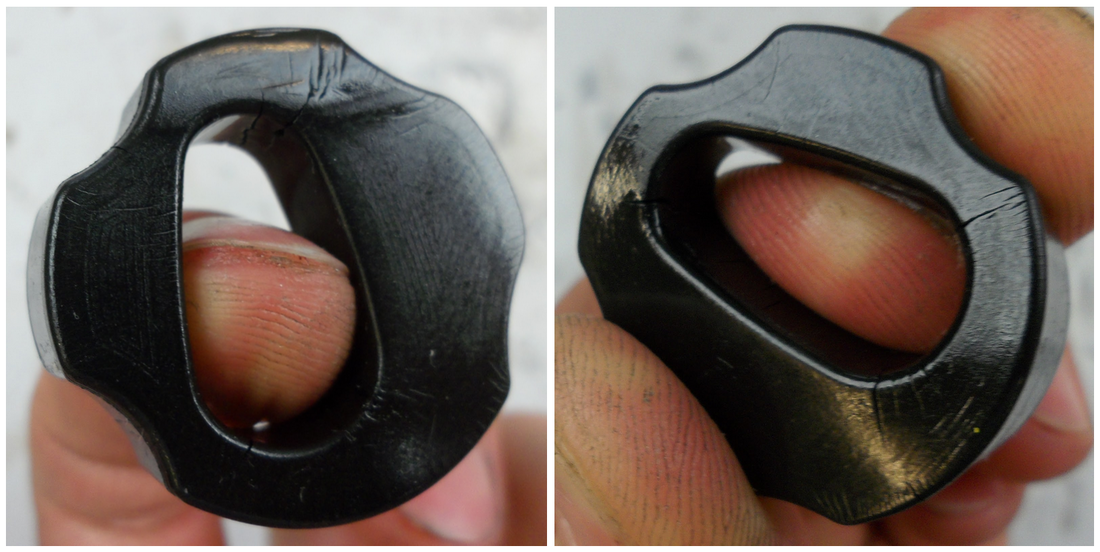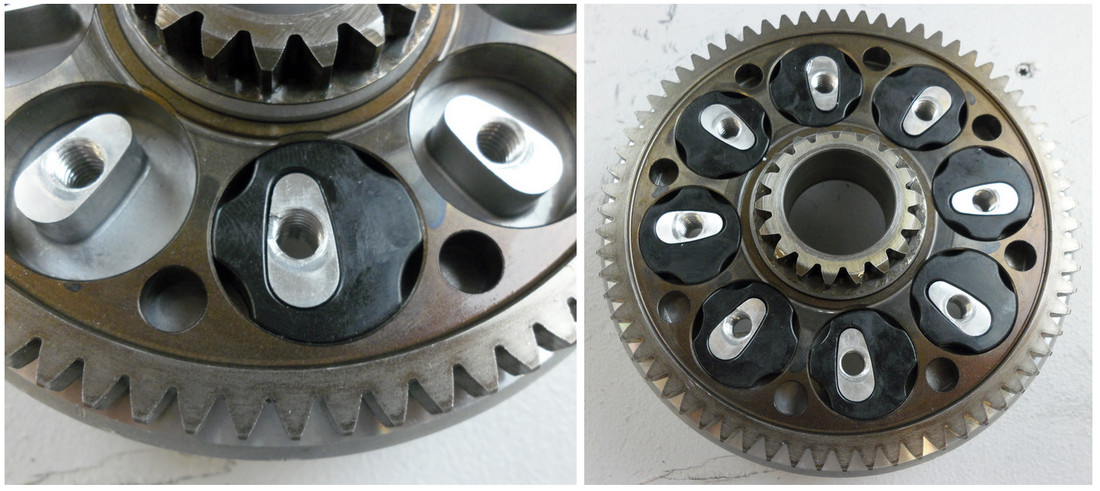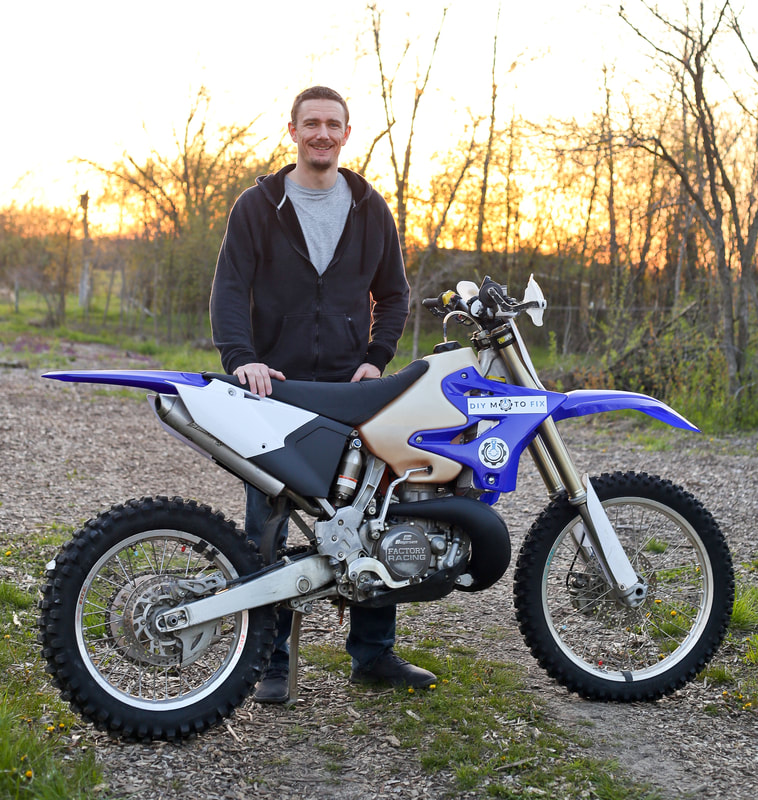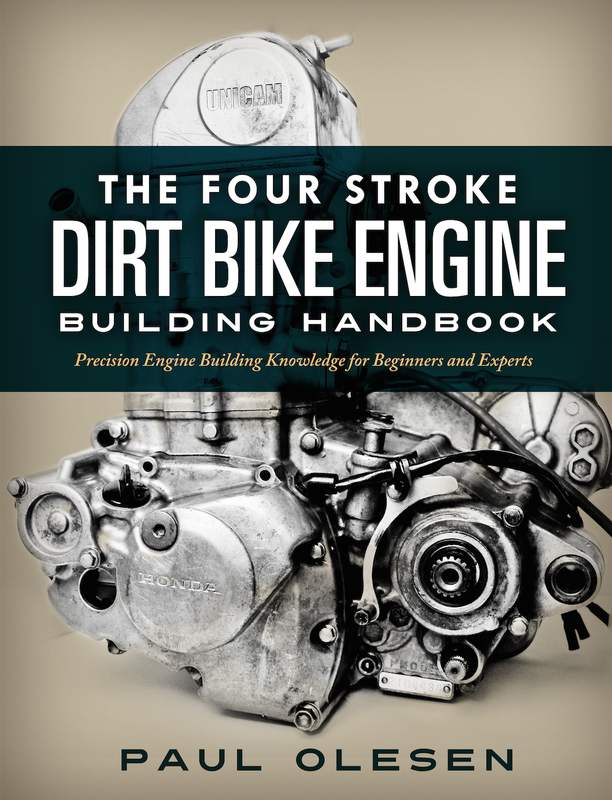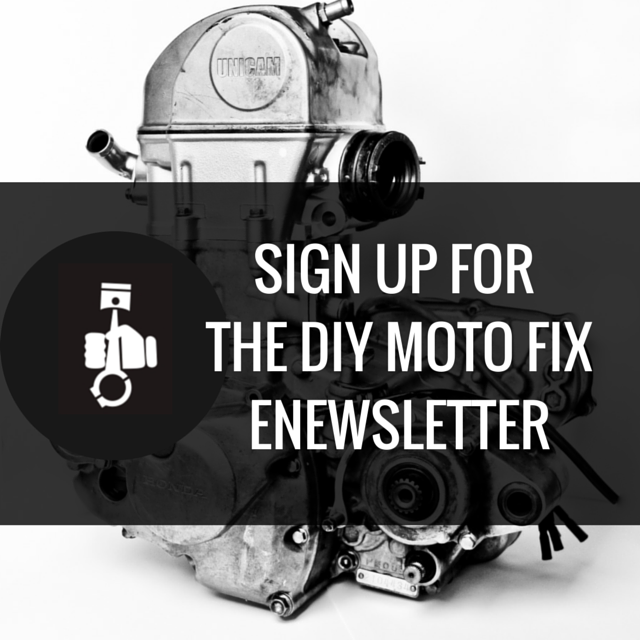The rubber dampers wear out from normal use and in most cases can be replaced. Replacement of the dampers is a fraction of the cost of buying a new clutch basket, does not require a lot of special tools, and you aren’t out anything if the project doesn’t go as planned.
Before I get into the details of replacing the dampers, you are probably wondering how you can tell the dampers are worn out. When the engine is running some additional gear noise coming from the clutch may be noted, but honestly this is a problem difficult to diagnose when the engine is together. Finding this problem is much more likely when servicing the clutch pack or performing other work on the engine.
The easiest way to determine if the dampers have worn is by trying to rotate the clutch gear independently from the clutch basket. Depending on how worn the dampers are this may take a little bit of force, so it is best to lock out the clutch gear and primary drive gear. Once locked, the basket can be rotated back and forth to check for free play. Alternatively the clutch gear can be clamped in the soft jaws of a vice while trying to rotate the basket back and forth. The clutch basket should not move independently from the clutch gear.
In the first photo note the alignment marks are perfectly aligned. In the second photo the marks have shifted about an ⅛” (3mm). This may not look like much, but it will feel like a lot when you twist the basket.
Prior to starting this project you’ll want to make sure you can source new dampers for the clutch basket. Aftermarket clutch manufacturers often offer replacement dampers for their clutches which can work equally well in a stock basket. Hinson, Wiseco, and others supply “cushion kits” which can be purchased from their respective websites, through Ebay, Amazon, or anywhere else you may like to do your motorsport shopping.
Before attempting to dismantle the clutch basket, check to see how much clearance is between the rivets and other features on the engine. Usually the idler gear will be the closest in proximity to the rivets. If the engine has an oil pump gear driven off the clutch, the oil pump gear may also be close to the rivets. Make a mental note of the clearance for future reference. The clearance between the parts when using bolts should be roughly equal to the clearance between the parts when the original rivets were used.
The first mistake I made was a very silly one in hindsight. I didn’t realize that on this particular clutch the rivets are countersunk. Anytime countersunk rivets are used, grinding their heads off won’t work.
6.00mm x 1.00 - #8 drill bit
7.00mm x 1.00 - letter “B” or 15/64” drill bit
8.00mm x 1.25 - letter “H” or 17/64” drill bit
The bolt head type will come down to your given clearance requirements between the backing plate and idler gear. You may find that a countersunk or button style head will work well. A great resource for selecting fasteners is at McMaster-Carr. If you’ve never explored McMaster-Carr you’ll quickly come to find that they sell just about everything under the sun and if you’re not careful you may part with more money than you originally intended! A few other good sources for metric hardware include Ebay (simply type in the bolt type you’re searching for in the search to turn up lots of results), Maryland Metric, and Boltnet.
For my basket I chose an 8mm x 1.25 Grade 12.9 socket head button which was 14mm long. Once the bolt has been selected, the backing plate and basket can be modified to suit. Start by enlarging the backing plate so that it will accept the bolts.
After clearances have been checked and everything is ready for final assembly, the parts should all be thoroughly cleaned to remove any metal debris stuck to them. The clutch gear and new dampers can be reinstalled. If the dampers are directional, make sure they are installed in the correct orientation.
If you liked this post and want more dirt bike info, I send out a weekly eNewsletter with tons of free tips and tricks. Enter your email below to get signed up.
Sign me up for the eNewsletter!
I'm ready to take my dirt bike knowledge to the next level.







